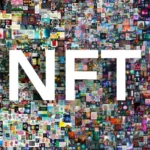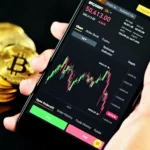Non-fungible tokens (NFTs) have revolutionized the digital world by allowing creators and investors to buy, sell, and trade unique digital assets.
Whether you are an artist looking to sell your work, a collector wanting to buy exclusive items, or an investor exploring digital assets, understanding how NFT marketplaces work is crucial.
This guide provides a comprehensive step-by-step process on how to buy and sell NFTs on popular marketplaces, highlighting key platforms, transaction processes, security measures, investment strategies, and tips for success.
Understanding NFTs and Marketplaces
What Are NFTs?
NFTs are digital assets that represent ownership of a unique item, stored on a blockchain.
These can be digital art, music, videos, virtual real estate, and more. Unlike cryptocurrencies like Bitcoin or Ethereum, NFTs are indivisible and unique.
How NFTs Work
NFTs are stored on blockchain networks, ensuring authenticity and security. Each NFT contains metadata, including ownership details, asset descriptions, and transaction history. The blockchain verifies the legitimacy of NFTs, preventing duplication or forgery.
Popular NFT Marketplaces
Here are some of the most widely used NFT marketplaces:
| Marketplace | Blockchain | Notable Features |
|---|---|---|
| OpenSea | Ethereum, Polygon, Solana | Largest NFT marketplace, supports multiple blockchains |
| Rarible | Ethereum, Flow, Tezos | Community-driven platform with governance token (RARI) |
| Foundation | Ethereum | Exclusive, invite-only marketplace for artists |
| SuperRare | Ethereum | Focus on high-quality digital artwork |
| Binance NFT | Binance Smart Chain | Low fees, integrated with Binance ecosystem |
| Nifty Gateway | Ethereum | Premium curated NFT drops |
| LooksRare | Ethereum | Decentralized and rewards-based marketplace |
| Magic Eden | Solana | Popular for gaming and collectibles NFTs |
ALSO READ: How to Earn Passive Income Through DeFi Staking and Yield Farming?
How to Buy NFTs

Step 1: Set Up a Crypto Wallet
To buy NFTs, you need a cryptocurrency wallet compatible with the blockchain of the marketplace you are using. Popular wallets include:
- MetaMask (Ethereum, Polygon)
- Coinbase Wallet (Ethereum)
- Trust Wallet (Binance Smart Chain, Ethereum)
- Phantom Wallet (Solana)
Step 2: Add Funds to Your Wallet
Most NFT purchases require Ethereum (ETH) or another native token of the chosen blockchain. You can buy crypto from exchanges like Binance, Coinbase, or Kraken and transfer it to your wallet.
Step 3: Connect Your Wallet to an NFT Marketplace
- Visit the NFT marketplace and click Connect Wallet.
- Approve the connection in your wallet.
- Ensure the platform is legitimate to avoid phishing scams.
Step 4: Browse and Select an NFT
- Search for NFTs by category, artist, or price.
- Check ownership history, metadata, and authenticity verification.
- Review creator details and previous sales data.
Step 5: Purchase the NFT
- Click Buy Now or place a bid if it’s an auction.
- Confirm the transaction in your wallet and pay the gas fees.
- Monitor network congestion, as high demand increases fees.
Step 6: Verify Ownership
After purchase, your NFT will appear in your wallet or the marketplace profile under Owned Items.
How to Sell NFTs

Step 1: Choose a Marketplace
Select a platform where you want to list your NFT. Consider transaction fees, audience size, and blockchain compatibility.
Step 2: Upload Your NFT
- Click on Create or Mint.
- Upload your digital asset and add metadata (title, description, royalty percentage, categories, and properties).
- Set royalty fees to earn a percentage of secondary sales.
Step 3: Set the Price
- Fixed Price: Set a price for direct purchase.
- Auction: Let buyers place bids over a set period.
- Dutch Auction: Set a decreasing price over time.
Step 4: List the NFT for Sale
- Click List for Sale and approve the transaction in your wallet.
- Pay the listing fee (varies by platform and blockchain).
Step 5: Promote Your NFT
- Share your NFT on social media.
- Engage with NFT communities on Discord, Twitter, and Reddit.
- Collaborate with influencers and NFT enthusiasts to boost visibility.
Step 6: Complete the Sale
- When a buyer purchases your NFT, the marketplace handles the transaction.
- You receive the payment in your connected wallet minus any platform fees.
- Transfer the NFT securely if selling outside a marketplace.
ALSO READ: How to Safely Store Your Cryptocurrencies?
Security Tips for NFT Buyers and Sellers
- Use Reputable Marketplaces – Avoid scams by sticking to well-known platforms.
- Beware of Phishing Attacks – Double-check links before connecting your wallet.
- Verify Smart Contracts – Ensure contracts are audited to avoid vulnerabilities.
- Keep Private Keys Safe – Never share your seed phrase or private keys.
- Use a Hardware Wallet – Consider cold storage for valuable NFTs.
- Check Transaction Fees – Be aware of gas fees and marketplace charges.
Investment Strategies for NFTs

- Short-Term Flipping: Buy NFTs early in collections and sell for profit during high demand.
- Long-Term Holding (HODL): Invest in valuable or historical NFTs that appreciate over time.
- Staking NFTs: Some platforms allow staking NFTs to earn rewards or passive income.
- Fractionalized NFTs: Purchase fractional ownership of high-value NFTs to reduce investment risk.
Future of NFTs
NFTs are evolving beyond digital art. New use cases include:
- Gaming – Play-to-earn models and in-game NFT assets.
- Virtual Real Estate – Digital land ownership in metaverses.
- Music and Film – Artists using NFTs for direct fan monetization.
- Identity and Credentials – NFTs for digital identity and academic certification.
- DeFi and DAOs – NFTs as collateral for loans and governance participation.
ALSO READ: How to Stay Updated with the Latest Crypto News and Trends?
Conclusion
Buying and selling NFTs on popular marketplaces is an exciting opportunity for artists, collectors, and investors.
By following the steps outlined in this guide, you can successfully navigate the NFT ecosystem while maximizing your chances of success.
Whether you’re entering the NFT space for profit or passion, staying informed, applying security measures, and making strategic investment decisions will help you make the most of your digital assets.







